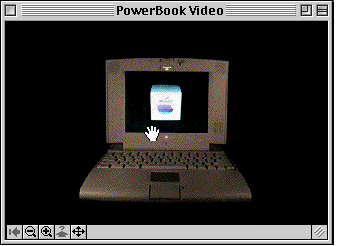
Programming With QuickTime VR
| Previous | Chapter Contents | Chapter Top | Next |
The data for a QuickTime VR virtual world is stored in a QuickTime VR movie. A QuickTime VR movie contains a single scene , which is a collection of one or more nodes. A node is a position in a virtual world at which an object or panorama can be viewed. For a panoramic node, the position of the node is the point from which the panorama is viewed. QuickTime VR scenes can contain any number of nodes, which can be either object or panoramic nodes.
QuickTime uses the term movie to emphasize the time-based nature of QuickTime data (such as video and audio data streams). QuickTime VR uses the same term solely on analogy with QuickTime movies; in general, QuickTime VR data is not time-based.
An object node (or, more briefly, an object ) provides a view of a single object or a closely grouped set of objects. You can think of an object node as providing a view of an object from the outside looking in. Figure 1-1 shows one view of an object node. The user can use the mouse or keyboard to change the horizontal and vertical viewing angles to move around the object. The user can also zoom in or out to enlarge or reduce the size of the displayed object. Object nodes are often designed to give the illusion that the user is picking up and turning an object (in Figure 1-1 , a Macintosh PowerBook computer) and viewing it from all angles.
Figure 1 An object in a QuickTime VR virtual world

A panoramic node (or, more briefly, a panorama ) provides a panoramic view of a particular location, such as you would get by turning around on a rotating stool. You can think of a panoramic node as providing a view of a location from the inside looking out. Figure 1-2 shows one view of a panoramic node. As with object nodes, the user can use the mouse (or keyboard) to navigate in the panorama and to zoom in and out.
Figure 2 A panorama in a QuickTime VR virtual world

A node in a QuickTime VR movie is identified by a unique node ID, a long integer that is assigned to the node at the time a VR movie is created (and that is stored in the movie file).
When a QuickTime VR movie contains more than one node, the user can move from one node to another if the author of the QuickTime VR movie has provided a link (or connection) between the source and destination nodes. A link between nodes is depicted graphically by a link hot spot, a type of hot spot that, when clicked, moves the user from one node in a scene to another node.
It's also possible to move from node to node programmatically, using the QuickTime VR Manager, even between nodes that were not explicitly linked by the movie's author.
| Previous | Chapter Contents | Chapter Top | Next |